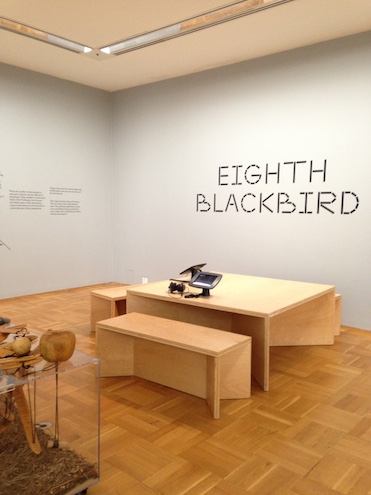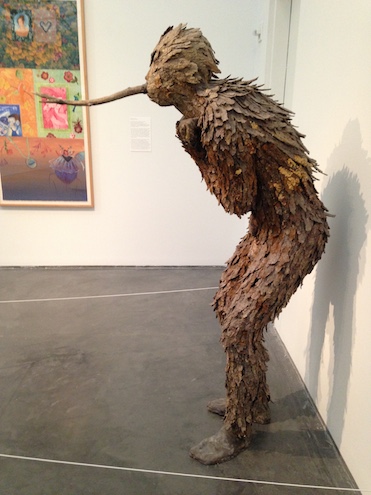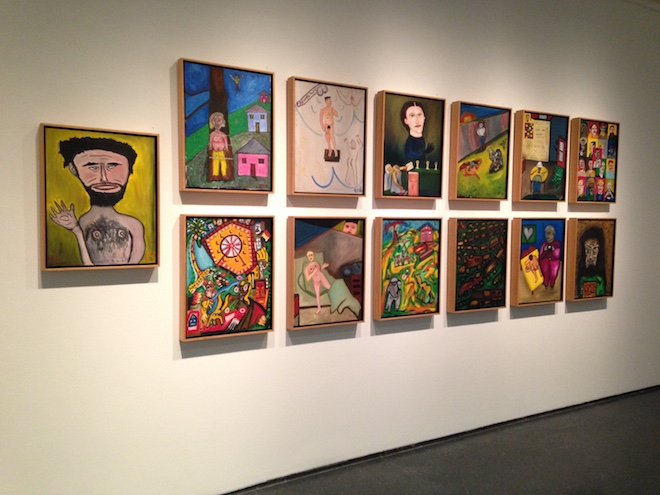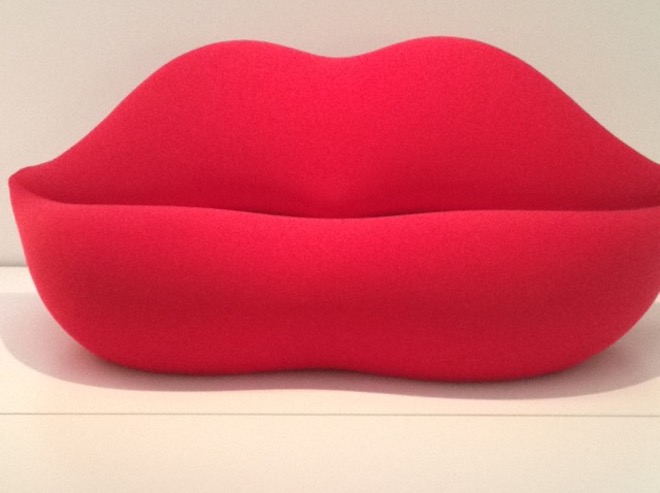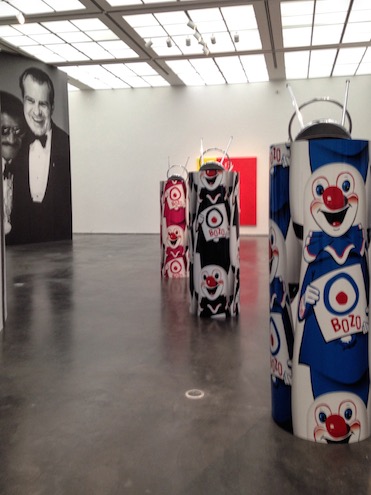For even the most starry-eyed of freshmen, a Northwestern winter quarter can be disheartening - frigid Chicago winters, endless midterms and the absence of flattering winter wear make it difficult to do anything but snuggle burrito-style in your bed and listen to PILLOWTALK on repeat (just me? oh ok #zayn).
But this winter, Northwestern is making it a little easier to escape the winter funk: thanks to a new partnership between Northwestern and the Museum of Contemporary Art Chicago, all Northwestern students, faculty and staff have free admission to the museum and select discounted tickets to museum events. The MCA is located just a block away from the Intercampus shuttle stop in Chicago, so not only do you get free admission to one of Chicago’s coolest museums but also free transportation. Can you say Go Cats?
To help you plan the MCA visit you’re now furiously trying to fit into your hectic Northwestern schedule, here’s a quick primer of what’s showing this season:
Surrealism: The Conjuring Life (through June 5)
What it is:
The works of Chicago-bred surrealist artists mirror classical European surrealist art of the 20s and 30s, with pieces ranging from whimsical to political, arresting to perplexing and parodic to provocative. Yet the exhibit is undeniably cohesive, as each piece expounds on common themes of “the conjuring life” as fantastical, strange, deeply personal, disturbing, or all of the above.
While there’s a fair amount of “traditional” visual art, there is an equal amount of eccentric forms such as collage and assemblage that incorporate unconventional materials and techniques. Marcos Raya’s “Night Nurse”, for example, occupies a whole corner of the exhibit, and acts as a diorama of sorts; manipulated mannequins, surgical equipment and other hospital paraphernalia punctuate a painted portrait at the piece’s center, depicting not simply an individual but an experience of hospitalization.
Verdict:
For those who have no idea what surrealism is beyond that Magritte pipe (guilty), this exhibit is a great introduction to the “art of the irrational”, highlighting Chicago’s own lesser-known surrealist collectives while making a seemingly esoteric genre more accessible. The beauty of surrealist art is that it defies or appropriates aesthetic value to probe deeper into the artist, so keep an open mind!
Kathryn Andrews: Run For President (through May 8)
What it is:
Equal parts thought provoking and topical, Kathryn Andrews’ first American solo museum presentation questions how political authority, pop culture, and ideas of “Americanism” intertwine. Massive, encompassing walls of political iconography – the Oval Office, Richard Nixon – are contrasted with brightly colored, cartoonish imagery. Much of the gallery is empty space, allowing the creative reimaginings of campaign posters and governmental imagery to simply gesture at ideas that the viewers can interpret for themselves.
Verdict:
The connection is not all that subtle – political candidacy as pop culture was thoroughly mined by think pieces circa Obama’s 2008 “Hope” Campaign – but it is one that resonates in light of the upcoming election and encourages the viewer to reflect on the authority of images and brands in the modern America. Worth looking at if you are questioning the legitimacy of the American political system or if you have recently laughed at a meme of Donald Trump.
Gabriel Ferrer (through March 6)
What it is:
One of the MCA’s smaller gallery spaces currently houses the work of Gabriel Ferrer, a Puerto-Rican born artist. In both paint and handcrafted pieces, Ferrer incorporates inspirations from his homeland, as well as emblems of his travels away from Puerto Rico. The exhibit also features Ferrer’s collaborations with other notable Latin American artists, such as musician Rafael Cortijo and Nobel prize-winning novelist Gabriel García Márquez. In his series of paintings depicting scenes from García Márquez’s Cien años de soledad (One Hundred Years of Solitude), Ferrer’s colorful yet surreal style shines.
Verdict:
MCA consistently showcases distinctive artists of color, and this little gallery is no exception. Don’t overlook this on your way to the Pop Art exhibition upstairs!
eighth blackbird (through July 10)
What it is:
Another small exhibit features eighth blackbird, a Chicago musical collective described as “new classical” and known for their visually experimental, interactive shows. Musical implements occupy one room, housing the band’s live performances (see the schedule here) or, in their absence, video projections of their rehearsal footage. The other room features scores and manuscripts from Northwestern University’s own library of contemporary music. In front of a wall of instructions sits an interactive “instrument” comprised of rocks, bamboo stems, and other eclectic natural materials whose sounds are magnified by embedded microphones, allowing the viewer to compose their own symphony.
Together, the exhibit reveals the continually fluctuating dynamic between performer and audience, allowing the listener to take an active role in the music while also immersing themselves in the creative process that musicians undergo to produce their works.
Verdict:
The premise feels like it’s been explored before; nevertheless, it’s a quirky little exhibit that is sure to charm the music nerds out there. If you’re a fan of the band, or of contemporary music in general, this is a must-see.
Pop Art: The Street, The Store, and the Silver Screen and Pop Art Design (through March 27)
What it is:
The exhibit is divided into The Street, The Store, and the Silver Screen and Pop Art Design. The former demonstrates Pop Art’s fascination with the automotive, consumer, and celebrity cultures that characterized America in the 60s. Pieces are as cheeky as they are visually alluring, playing into our consumer fascination with color, repetition, and unfettered messaging. By playing into these inherent visual pleasures, Pop Art rejected fine art’s elitism in favor of an accessible, mass-marketable art form. This gallery features familiar objects and imagery comically manipulated to satirize, glorify, or simply amuse.
Opposite The Street, The Store, and the Silver Screen is Pop Art Design. Populated by funky sofas, abnormally sized household implements, and a bank of graphic design work, Pop Art Design showcases Pop Art’s take on everyday life, as experienced by the typical American consumer, as art. Brand management and furniture design became equal vehicles for Pop Art’s critiques and celebrations of consumer culture.
Verdict:
For anyone who isn’t an art aficionado, Pop Art is synonymous with Andy Warhol and his infamous Campbell’s can. But this exhibit showcases the magnitude of Pop Art’s history and ubiquity in all its glossy, high saturation opulence. From its Hollywood inspirations to its mainstream influences on commerce today, Pop Art’s cultural and aesthetic footprint dictated much of what we associate with Americana today. The iconic imagery and conscious influence of Pop Art is accessible to art hoes and casual art museum frequenters alike, making it a worthy centerpiece to the MCA’s roster this season.
